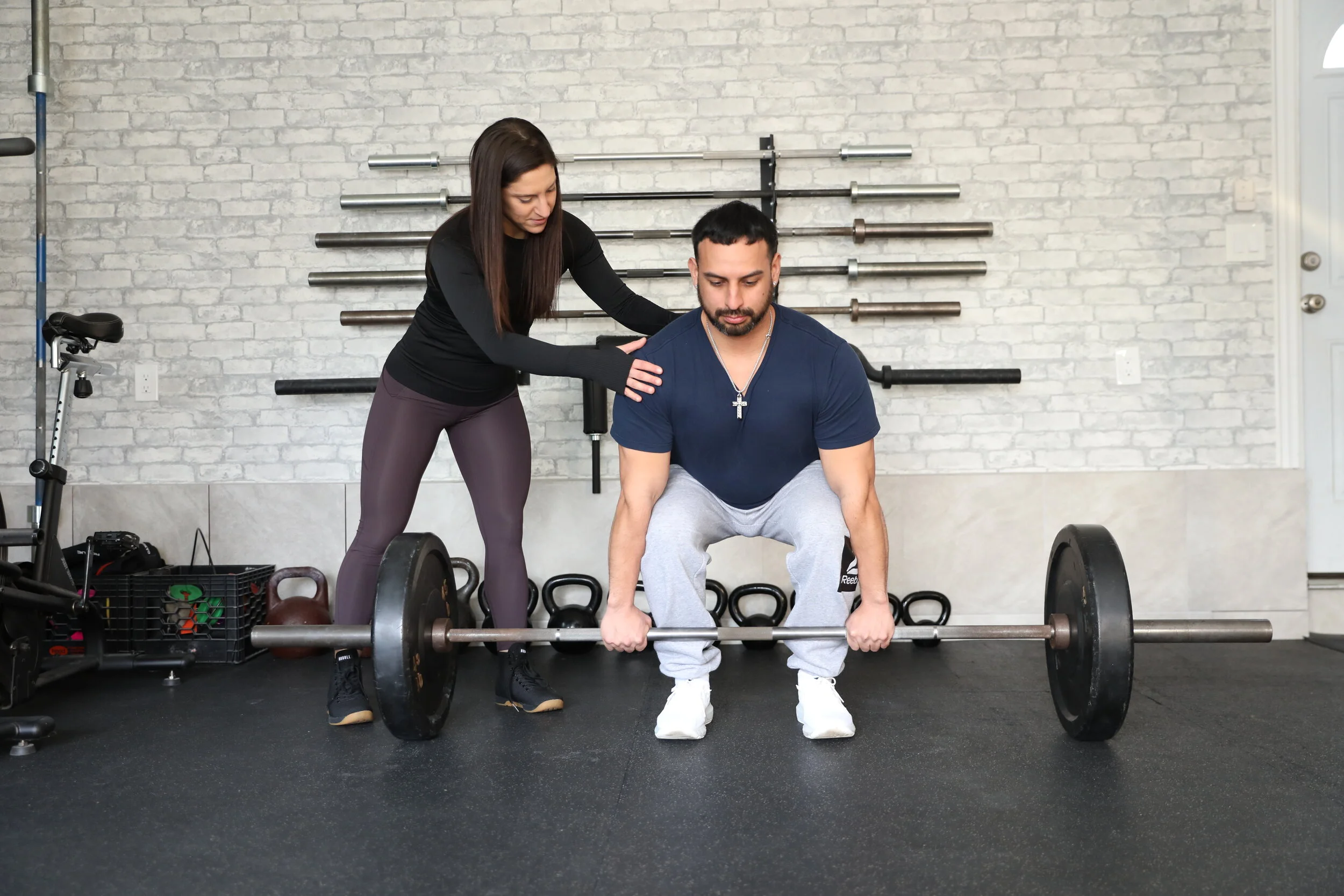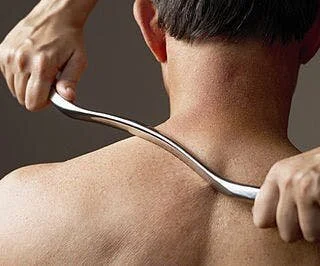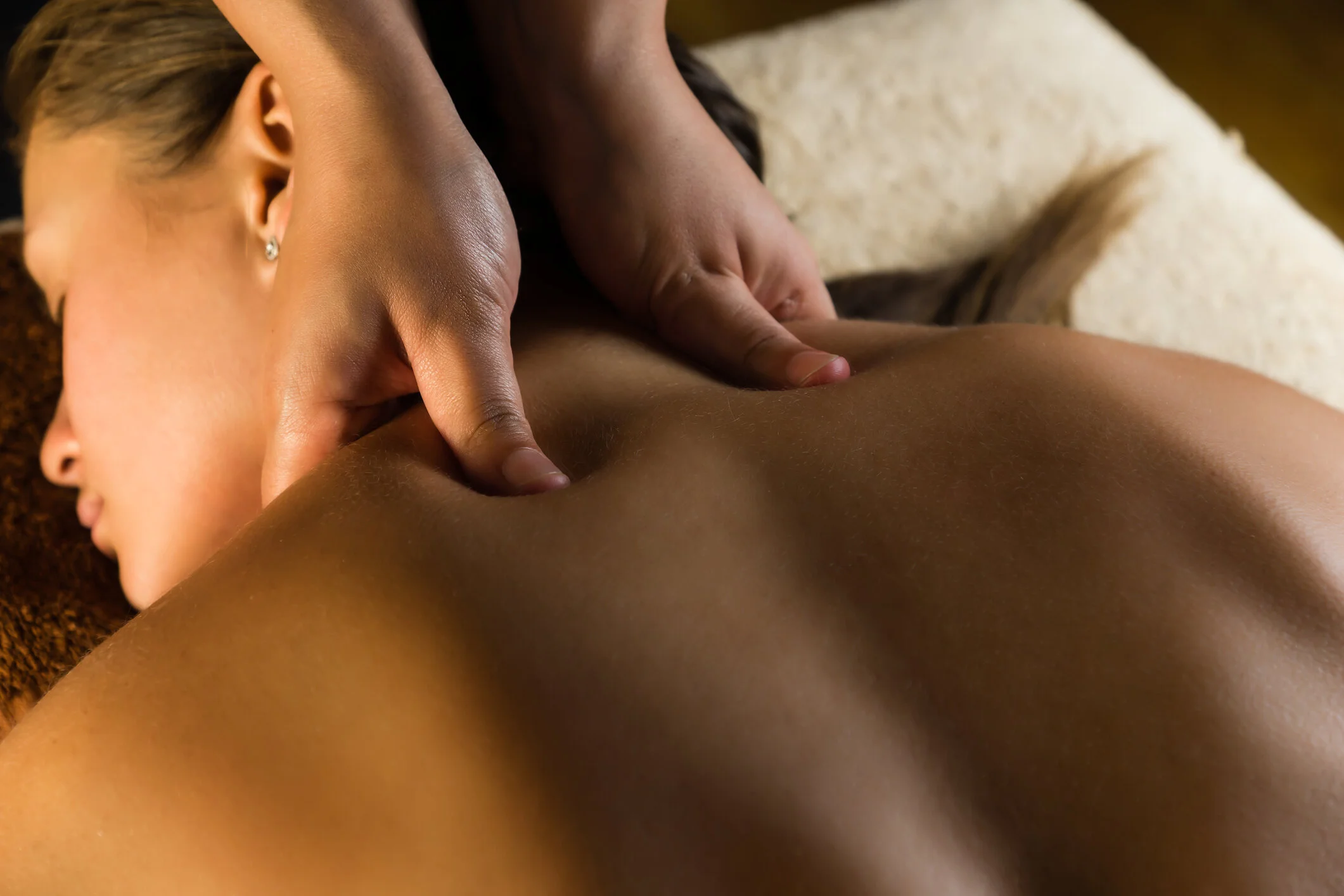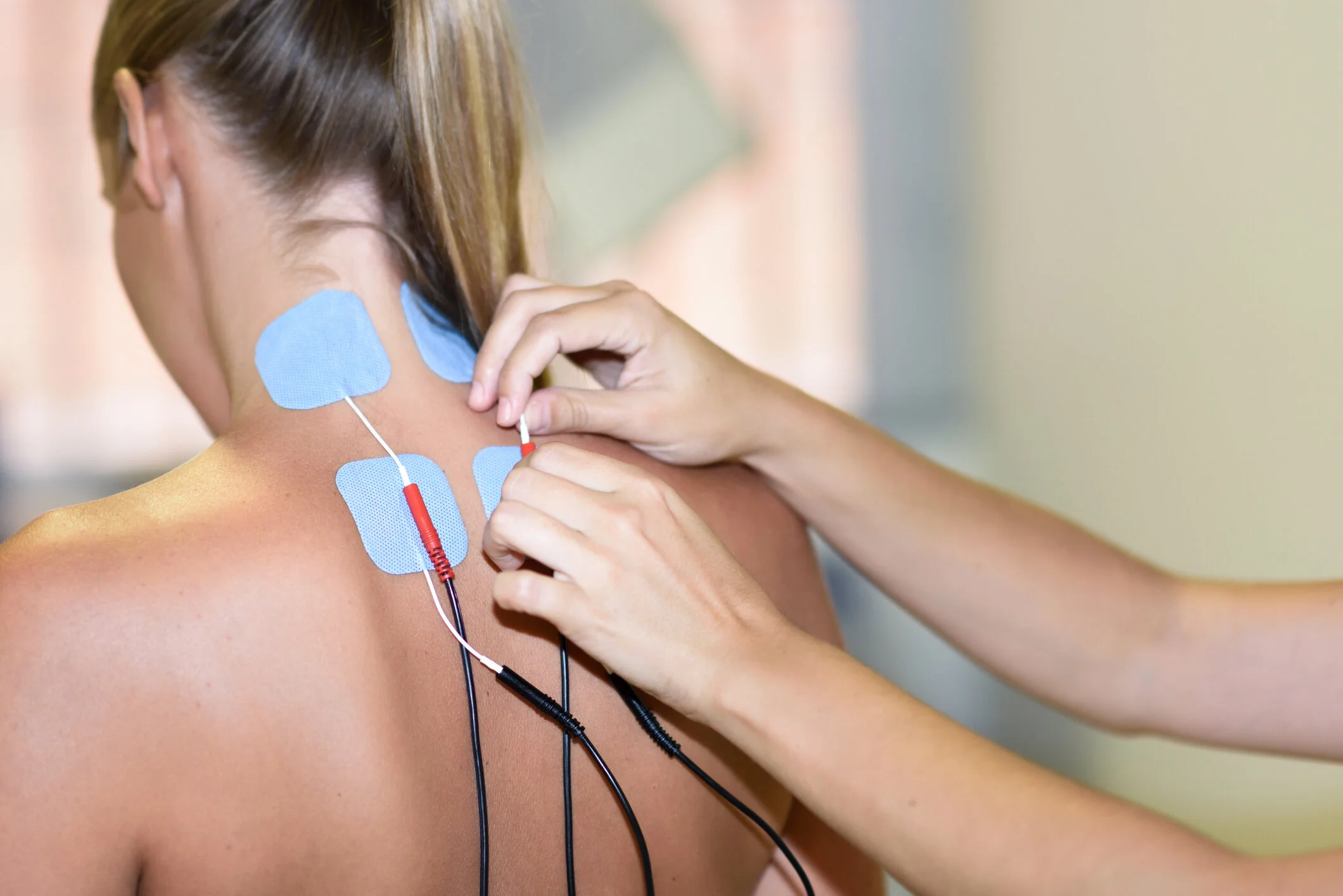You’ve had chronic low back pain with multiple acute episodes of increased pain that makes it nearly impossible for you to continue training for your powerlifting meet in 12 weeks. You’ve been to physical therapy multiple times; and now you’re back. You tell your new physical therapist that the last PT you went to did electrical stimulation (e-stim), heat, dry needling and gave you a home exercise program with some boring breathing techniques and a balloon to help you rehab. That all seemed to work and you want to know if they’re going to do the same thing for you now.
But did that treatment really “work” if you’re back in a physical therapy clinic for the same problem with the same symptoms, same lower back pain and still not squatting and deadlifting?
The short answer is no, it didn’t work. What it did was make you feel better at the time by helping reduce your flare up of symptoms. But based on your past experience with these treatments helping to relieve your back pain, you’re expecting, or even seeking out, the same interventions this time around. You believe it’s the key to get you quickly back to the gym and lifting for your powerlifting meet.
But is that really what you want? Do you really want to feel better for a little while just to end up in the same place a few months down the road? Or, do you want to find a more permanent solution that can help you stay under the barbell and give you the tools to independently manage your pain and injuries and reduce injury risk in the future?
If you’re partaking in barbell training or are a powerlifting athlete with injuries or pain, I’m guessing you’d like to find a long-term solution that helps break the cycle of chronic injuries with the associated acute flare-ups every so often.
So what’s the deal with all these treatments you’ve had in the past? If they seemed to help you feel better then why does your pain keep coming back? Everyone seems to be talking about them and even recommending them. But if they’re so “great” then why do you keep ending up back in the same place? You can also read our free guide to healthy barbell training here.
Graston, dry-needling, e-stim and massage are what we refer to as passive treatments. They don’t require any active participation by you, and are usually performed by the clinician/physical therapist. It’s not realistic for you to do them on your own outside of your physical therapy sessions and they don’t address the root cause of the problem causing your symptoms. So, at the end of the day, you’re seemingly reliant on them for relief because the issue returns in their absence.
So What’s the Hype Around Graston, E-Stim, Dry Needling & Massages?
All of the above mentioned treatments are often used with the goal of pain management, and improving your ability to move, because they help reduce pain restricting your movement. Claims have been made that these techniques “break up scar tissue and adhesions,” decrease inflammation, improve blood flow, and assist in the healing and recovery process. But let’s see what the research actually says about these treatments and if these claims are substantiated.
The Research
Dry Needling:
Dry Needling is a treatment using a thin needle penetrating and supposedly “stimulating” structures under your skin. It’s an invasive treatment where the needle is inserted directly into the muscle used with the goal of pain management to reduce your pain and improve your movement abilities.
The research on dry needling has a ton of limitations including lacking assessment of long-term outcomes of treatment and little-to-no evidence comparing dry needling to other, active physical therapy treatments. Various studies have shown that there can be pain reduction immediately following a dry needling treatment but there is no study showing improvement in pain or movement long-term. [1, 2, 3]
Instrument Assisted Soft Tissue Mobilization (IASTM)
You might know this as “Graston Technique,” the treatment where fancy stainless steel instruments are used to treat pain or tightness in a muscle or a joint. If you’re familiar with this you may have also heard that they’re used to “break up scar tissue or adhesions,” or even help improve muscle extensibility and flexibility.
But is this really what it’s doing?
In the clinical setting, IASTM is used to treat numerous different musculoskeletal conditions and pathologies but the evidence to support its efficacy is lacking. Studies show that people experience decreased pain immediately following treatment but this difference is not statistically significant or significant for long-term improvement of symptoms. [4]
Additionally, IASTM has been shown to improve joint range of motion within 24 hours of treatment, which is also a short-term change. [4] The studies on IASTM are lacking long-term follow-up periods to substantiate the claims of decreased pain and improved range of motion. So, even though there are short-term improvements, there is not evidence suggesting that this change is maintained over time. Therefore, IASTM won’t lead to long-term change without the addition of more active treatments, such as resistance training, addressing tissue overload, and movement patterns, because you will constantly rely on an external factor to feel better and improve function without actually addressing the issue.
Massage or Soft Tissue Mobilization (STM)
This is the manual manipulation of muscles and fascia with the goal of influencing mechanical and physiological effects on blood flow, temperature and autonomic reflex activity (relaxation). That’s why people get them: to relax and escape from the day’s problems. The research shows that massage can help with short-term pain reduction but will not improve function. Sounds familiar right? Additionally, massage has not been shown to lead to long-term improvements in pain or function. [5] Also sounds familiar. Are you catching our drift?
TENS or Electrical Stimulation (E-Stim)
I bet you’ve seen multiple companies advertising stim packs or machines to help improve recovery from barbell training, or even to help you warm-up or recover for powerlifting. Transcutaneous electrical nerve stimulation (TENS) is electrical stimulation that’s typically used for short-term pain relief. A low-voltage electrical current is delivered through the skin via electrodes. These are the portable units that you see powerlifters, CrossFit athletes, and olympic weightlifters using in the gym after their workout or when their back flares up. The research shows that TENS treatment does NOT result in significant improvements in pain but it has shown short-term improvements in function. [6] There is no evidence to support its use before or after barbell training on performance and the evidence is currently lacking on the long-term results of using a TENS unit.
So Why Do These Treatments Make You Feel Better?
Here’s why:
You expected them to make you feel better. Maybe you were told by your physical therapist, chiropractor, or a friend that these treatments will help with your injury or rehab faster, which in turn gave you confidence in their utilization.
These treatments can alter your perception of the pain. This can help you feel better initially while your pain improves and your body goes through its natural healing process.
While receiving these treatments you probably stopped doing the squat, bench press or deadlift (the barbell lifts) that were causing you pain - so of course you started to feel better! But these movements don’t have to be painful and learning how to do them safely and effectively for your body can allow you to continue barbell training without issues or flare-ups long-term.
These positive past experiences or taking the advice of people that have, may make you feel like Graston, dry needling, IASTM, stim, and massage are necessary. But alone (or together), they won’t create the change in your body that will rehabilitate you better long-term.
So is this really what you want?
Another round of physical therapy that will make you feel better for a little while only to end up in the same place once the weight on the barbell gets heavier?
My guess is, probably not.
So what does this mean in terms of how you should implement passive physical therapy treatments into your rehab, barbell training program, and recovery?
These passive treatments may help improve your symptoms of DOMS (delayed onset muscle soreness) or injury related pain for a short period of time. So in instances where you’re experiencing acute muscle or acute joint pain, and have limited function because of it, it might be helpful to implement some of these techniques.
These treatments probably helped you feel better because they give you short-term pain relief but not forever. Why? Because pain and injury are related to situations in which your body was acutely or chronically exposed to a load and/or position that you were not prepared to handle.
So in short, Graston, IASTM, Stim, Massage and Dry Needling are NOT long-term solutions.
The reason is because they aren’t:
Creating a long-term physiological change in your body
Addressing the tissue overload from your powerlifting program (volume, intensity, frequency)
Identifying and improving the technical deviations that occur under load while you’re squatting, bench pressing, and deadlifting.
In order to fully recover to train the squat, bench press and deadlift pain free, you need to:
Identify the cause
Reduce pain
Address and manipulate the cause
Re-introduce the aggravating movement via:
Graded exposure
Improved mechanics
Don’t get me wrong, passive treatments do serve a purpose in rehabilitation but it’s important that we understand what that purpose is and when they’re appropriate. Dry needling, IASTM, massage and TENS can all help to make you feel better (or make you think you feel better) enough to start doing more active treatment. Passive treatment only typically results in someone feeling better until they return to barbell training because there was no change in their movement or program to resolve the original issue. They can be helpful to get you comfortable enough to move but they shouldn’t be used with the goal of long-term pain relief or with the expectation that they’ll “cure” you. For powerlifters, Crossfit athletes, olympic weightlifters, and really anyone in general, passive physical therapy treatment should be followed by exercise where you’re loading your tissues. If you receive a passive treatment that gets you to move more, then it’s served a purpose. That’s it. Then load it.
Active, exercise-based treatments are proven to help you get and stay better long-term and have proven to cause physiological tissue adaptation. This addresses the cause of your pain or dysfunction by improving your movement, building muscle, and increasing strength. Studies have been conducted on the effects of barbell strengthening exercises, including the conventional deadlift, on low back pain. The results of these studies show positive long-term effects relative to those that assessed the outcomes of passive interventions. [7] In fact, using the barbell deadlift as a treatment for low back pain showed improvements in pain and function even 2 years after the initial treatment! [8] The long-term follow-up results that all the passive treatment studies are missing!
Even when you’re in pain, you can continue to barbell train. Adjust the intensity and modify the lift in various ways to help reduce pain and improve your barbell movement mechanics while recovering.
If you need tips on how to adjust your training on the fly, check out our Training with Pain Algorithm here!
If you’re injured, it’s okay to have some pain during certain barbell movements; this is normal. Keep training as long as it is not too intense and or becoming significantly worse as you continue increasing loads. It’s not realistic to expect pain-free movement from the beginning of the rehab process and we shouldn’t be scared of it or fear moving. Movement, increased gradually over time, is what will help you get better.
It’s important to consider load management when it comes to the powerlifts like the squat, bench press and deadlift relative to causing you pain. Lower the weight to a load that doesn’t significantly increase your pain, and if necessary, modify the lift (range of motion, speed, bar/grip/stance) until you start to feel better. Don’t worry, you won’t lose strength from reducing the loads temporarily. You’ll actually get back to business quicker because you’ll still be gradually increasing the weight as you progress instead of taking 8 weeks off until your pain goes away. For example, if you’ve got some lower back pain while performing the squat, try lowering the weight from the planned 315lb. to say 275lb. If that doesn’t help, incorporate a box to shorten the range of motion, or even try a tempo to help control the movement!
Taking the time to resolve your symptoms and improve your powerlifting technique will make you a more efficient, resilient and stronger lifter long-term. Rehabbing your injury in a way that helps you get better and stay better helps you continue to get stronger over time.
So if you’re walking back into physical therapy with another flare-up of acute low back pain and you tell your physical therapist that in the past massage, heat and e-stim worked for you, and you ask them if that’s what they’re going to do…try not to be skeptical if they have a different plan.
If their goal is to have you move (even with some pain) and spend less time with their hands on you, try to be open-minded. Let them assess your squat, bench press and deadlift under the barbell to help you improve your movement and pain over time. This is what you need to get better faster, have more longevity and give you the tools to independently manage your own symptoms if they do arise in the future. Actively improving your mechanics and gradually exposing yourself to range and load over time is what will help you break the cycle of low back pain and physical therapy, chiropractic, or massage therapy with only short-term relief.
BOOK A FREE CALL! If you’ve been struggling to resolve acute or chronic pain the PRS Clinical Coaches are available to help you troubleshoot. Book a Free Consultation Call with us today to figure out what the issue is and how we can address it for long-term results instead of short-term fixes.
GET SOME MORE HELP FROM US FOR FREE! Our Clinical Coaches are available daily in our Free Facebook group, The Secret Society of Barbell Mastery, where we help you improve and optimize your barbell lifts for injury risk reduction. Join us in there where we do over 100 free form checks every month!
JOIN OUR COURSE WAITLIST! If you're interested in learning how to optimize barbell technique, maximize strength and muscular development, and reduce injury risk (and peeing) for you, your clients or patients, then join the waitlist to get insider information on all the PRS online courses when they're ready for enrollment!
References
Gattie E, Cleland JA, Snodgrass S. The effectiveness of trigger point dry needling for musculoskeletal conditions by physical therapists: a systematic review and meta-analysis. J Orthop Sports Phys Ther. 2017;47(3):133-150.
Hu HT, Gao H, Ma RJ, et al. Is dry needling effective for low back pain? A systematic review and PRISMA-compliant meta-analysis. Medicine. 2018;97(26):1-10. doi:10.1097/MD.0000000000011225.
Collins S, Dow A, Rincon D. The effect of dry needling to the multifidus muscle on resting and contracted thickness of transversus abdominis in subjects with low back pain. UNLV Theses, Dissertations, Professional Papers, and Capstones. 2016;3540.
Cheatham SW, Lee M, Cain M, Baker R. The efficacy of instrument assisted soft tissue mobilization: a systematic review. J Can Chiropr Assoc. 2016;60(3)200-211.
Furlan AD, Giraldo M, Baskwill A, Irvin E, Imamura M. Massage for low-back pain. Cochrane Database Syst Rev. 2015;1(9). doi:10.1002/14651858.CD001929.pub3.
Lien-Chen W, Pei-Wei W, et. al. Literature review and meta-analysis of transcutaneous electrical nerve stimulation in treating chronic back pain. Reg Anesth Pain Med. 2018:23(4).
Berglund L, Aasa B, Hellqvist J, Michaelson P, Aasa U. Which patients with low back pain benefit from deadlift training? J Strength Cond Res. 2015;29(7):1803-1811.
Michaelson P, Holmberg D, Aasa B, Aasa U. High load lifting exercises and low load motor control exercises as interventions for patients with mechanical low back pain: a randomized controlled trial with 24-month follow-up. J Rehabil Med. 2016;48:456-463. doi:10.2340/16501977-2091.






